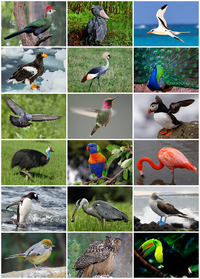
Photo from wikipedia
The widely recognized association between high sugar intakes and adverse health outcomes has increased consumer demand for products lower in sugar. This may lead to increased use of other sweeteners… Click to show full abstract
The widely recognized association between high sugar intakes and adverse health outcomes has increased consumer demand for products lower in sugar. This may lead to increased use of other sweeteners by the food industry. The current study investigated the prevalence and types of non-nutritive sweeteners over time (2013–2019) in New Zealand’s packaged food and beverages, overall and between categories. A New Zealand database of packaged foods and beverages was used to investigate the presence of Food Standards Australia New Zealand Code-approved non-nutritive sweeteners (n = 12). Products available in 2013 (n = 12,153) and 2019 (n = 14,645) were compared. Between 2013 and 2019, the prevalence of non-nutritive sweeteners in products increased from 3% to 5%. The most common non-nutritive sweeteners in both years were acesulphame-potassium, sucralose, aspartame, and stevia, which were predominantly found in special foods (breakfast beverages and nutritional supplements), non-alcoholic beverages, dairy products, and confectionery. The prevalence of non-nutritive sweeteners is increasing over time in New Zealand’s packaged foods and beverages and is likely a consequence of consumer demand for lower-sugar products. Ongoing monitoring of the prevalence and type of NNS is important to detect further increases.
Journal Title: Nutrients
Year Published: 2021
Link to full text (if available)
Share on Social Media: Sign Up to like & get
recommendations!